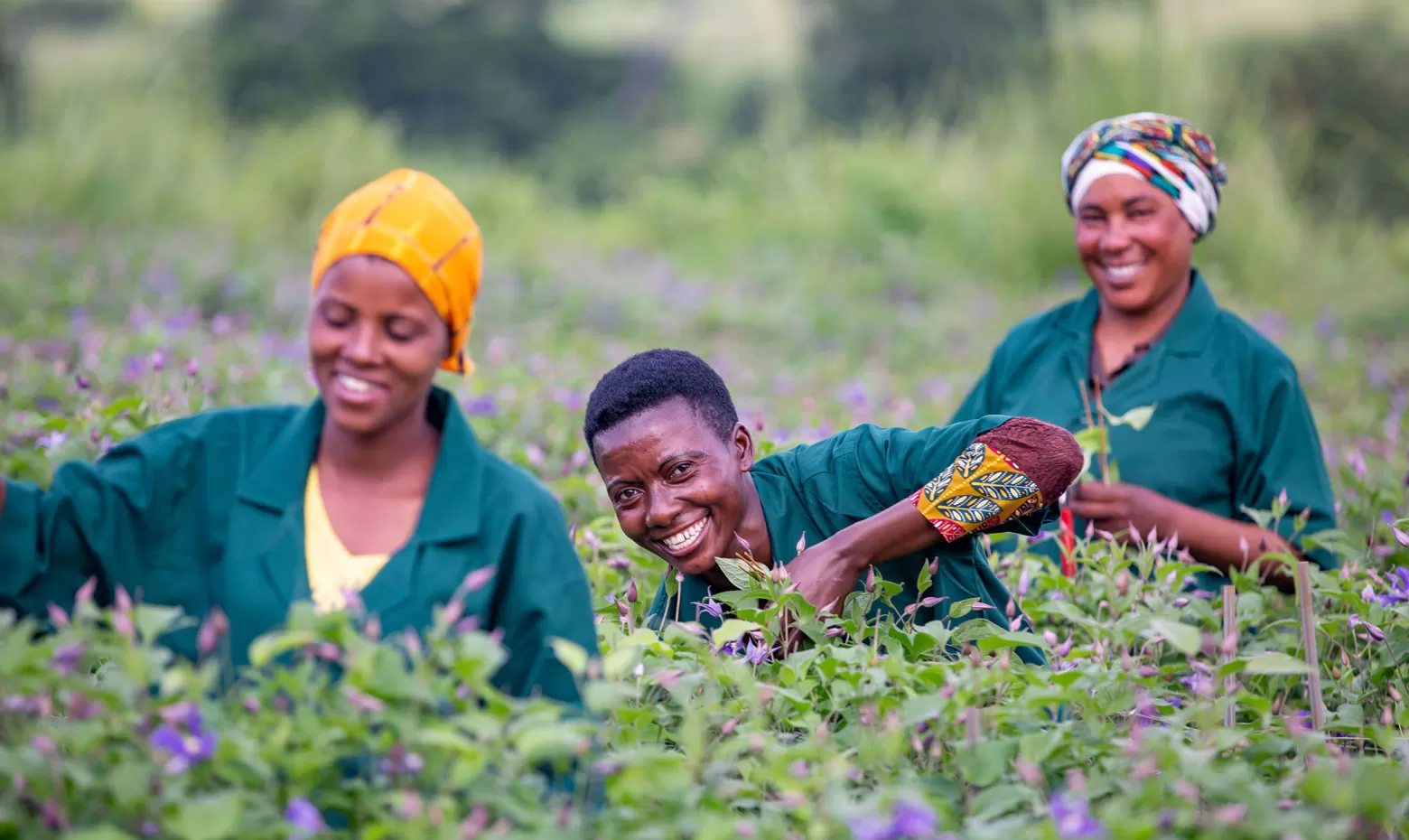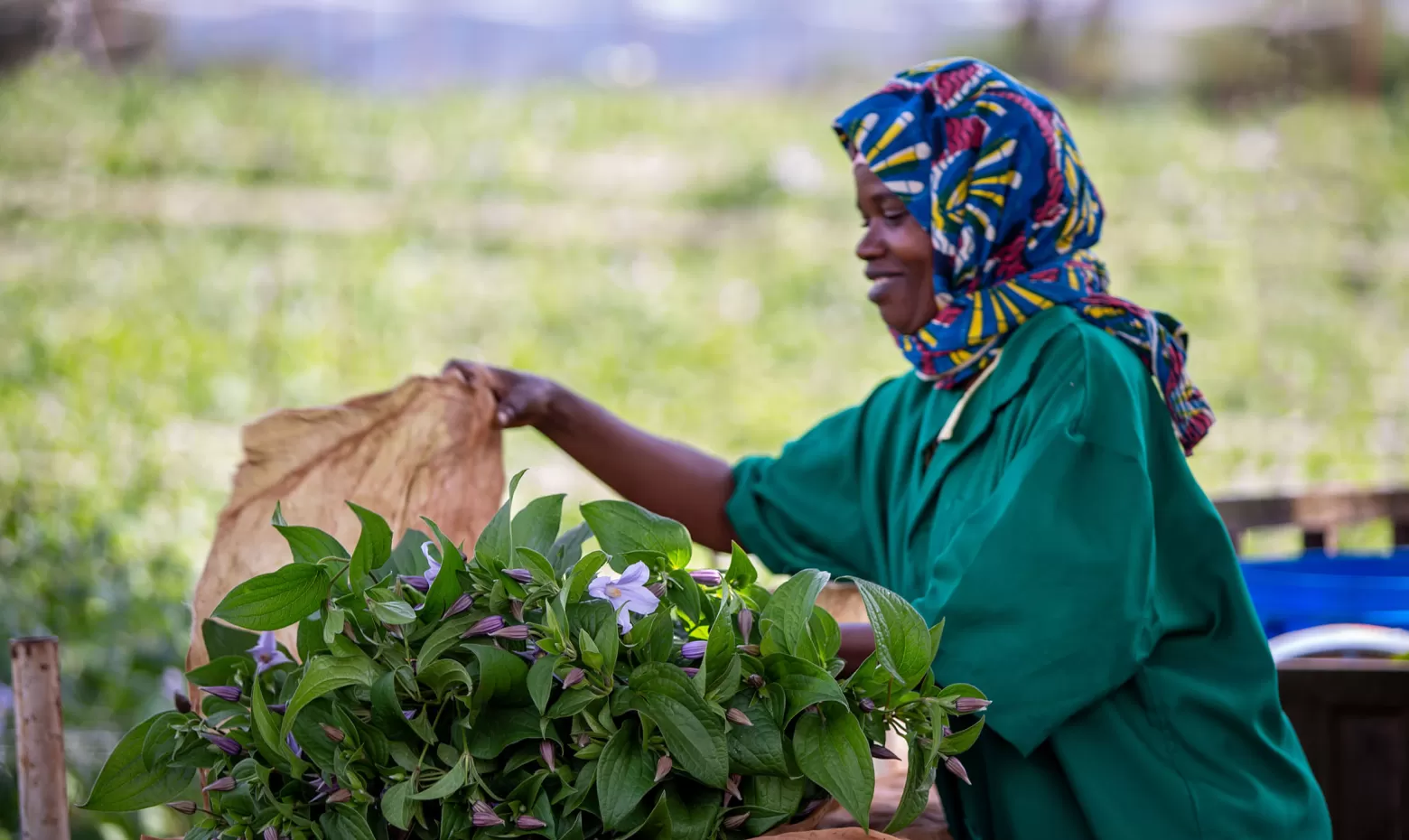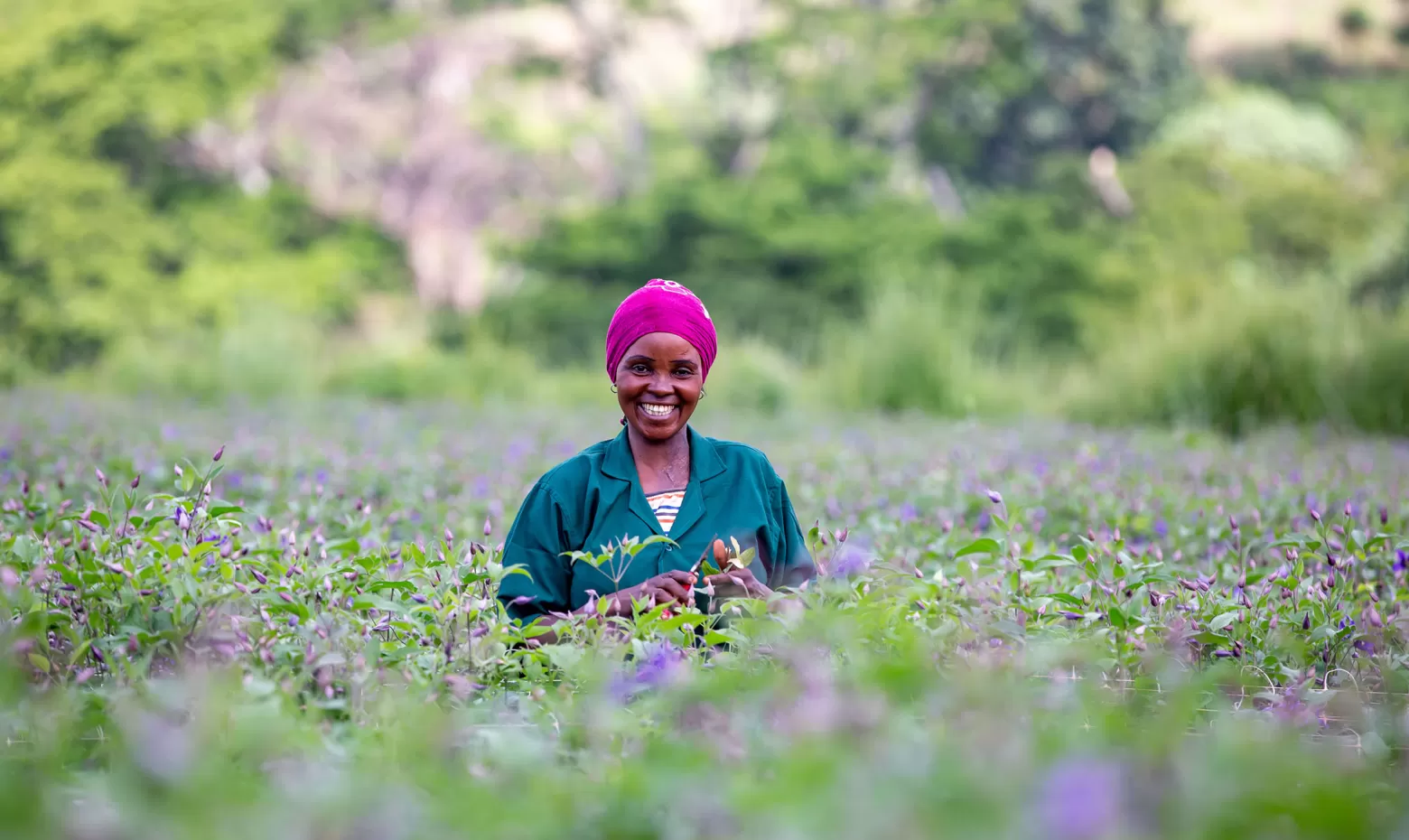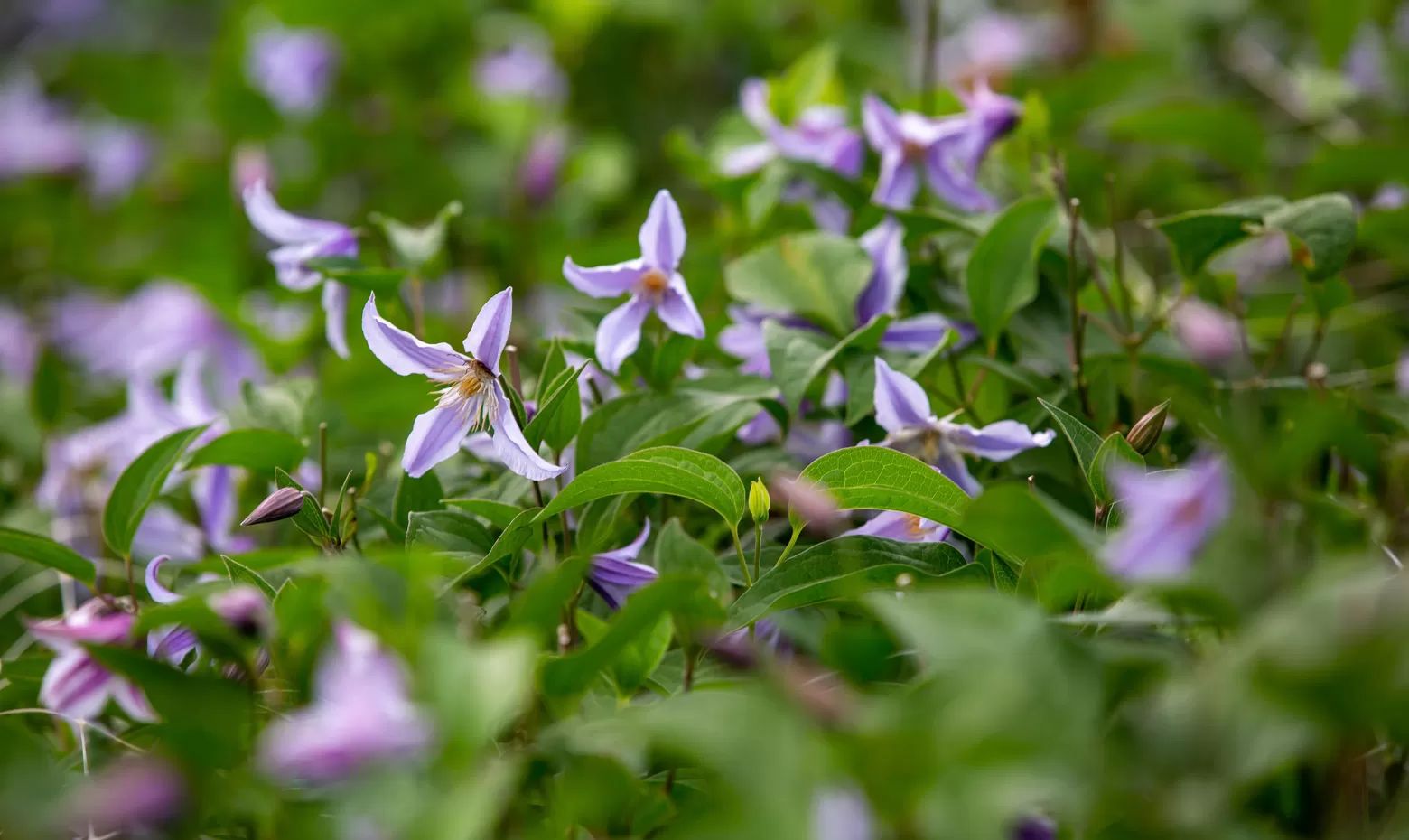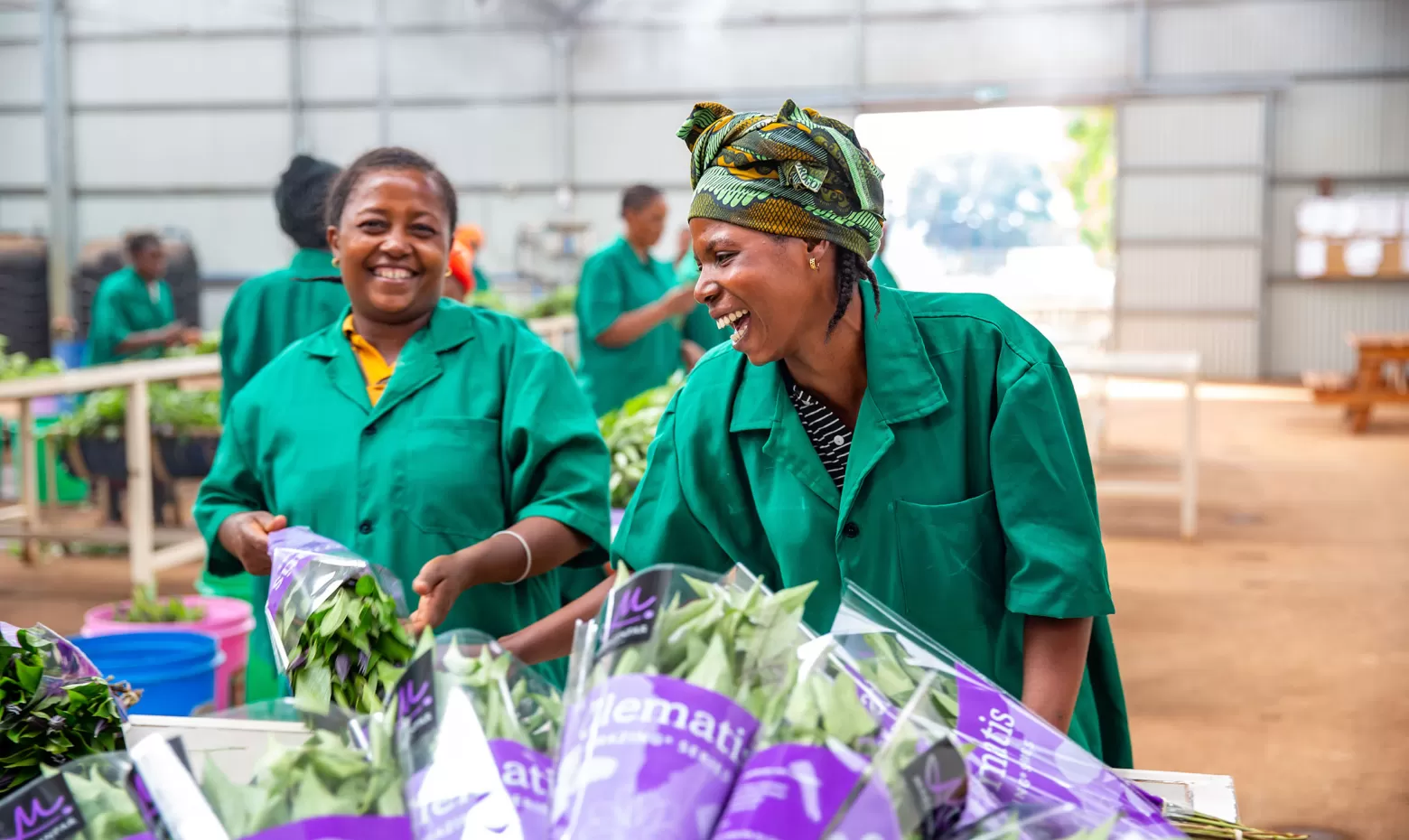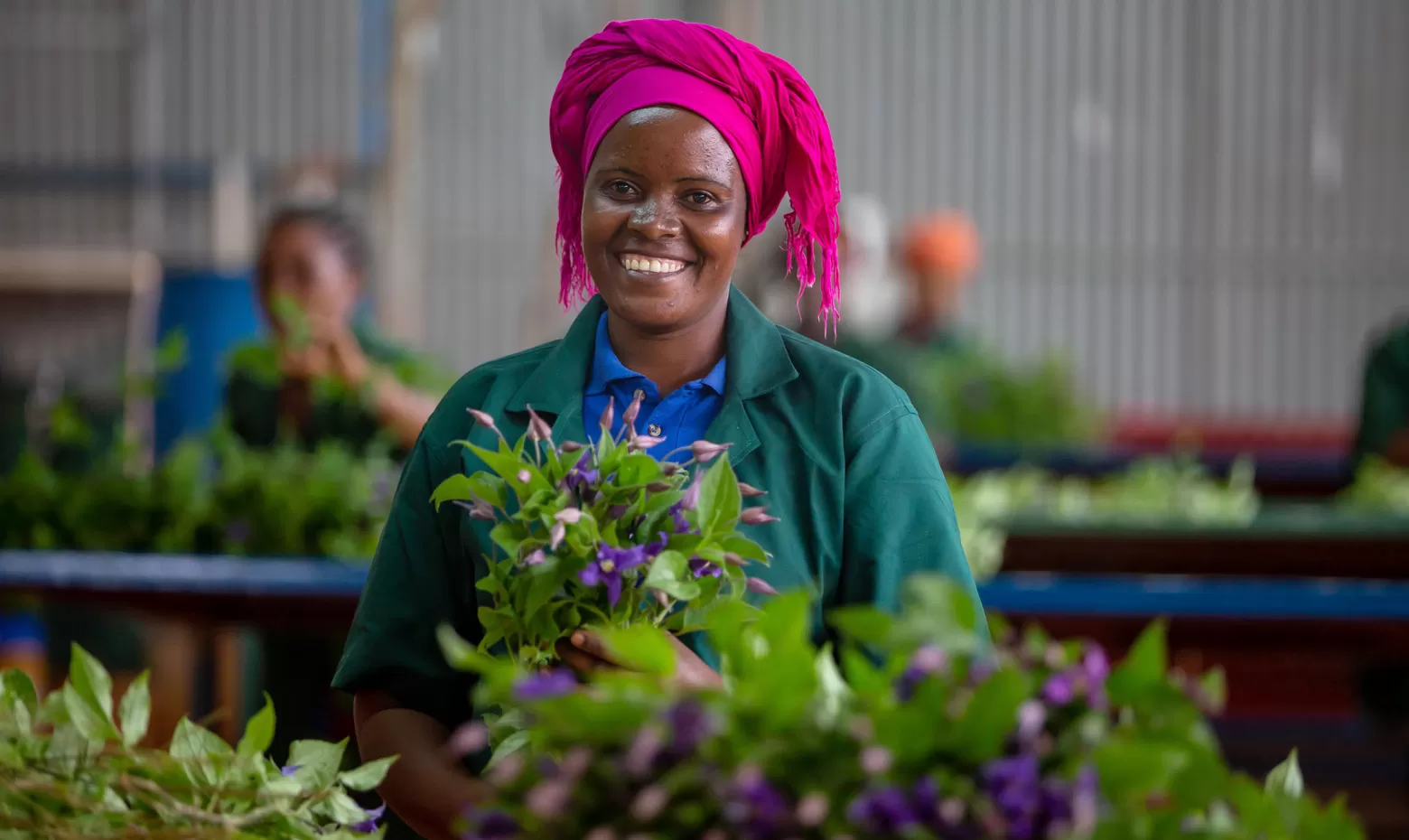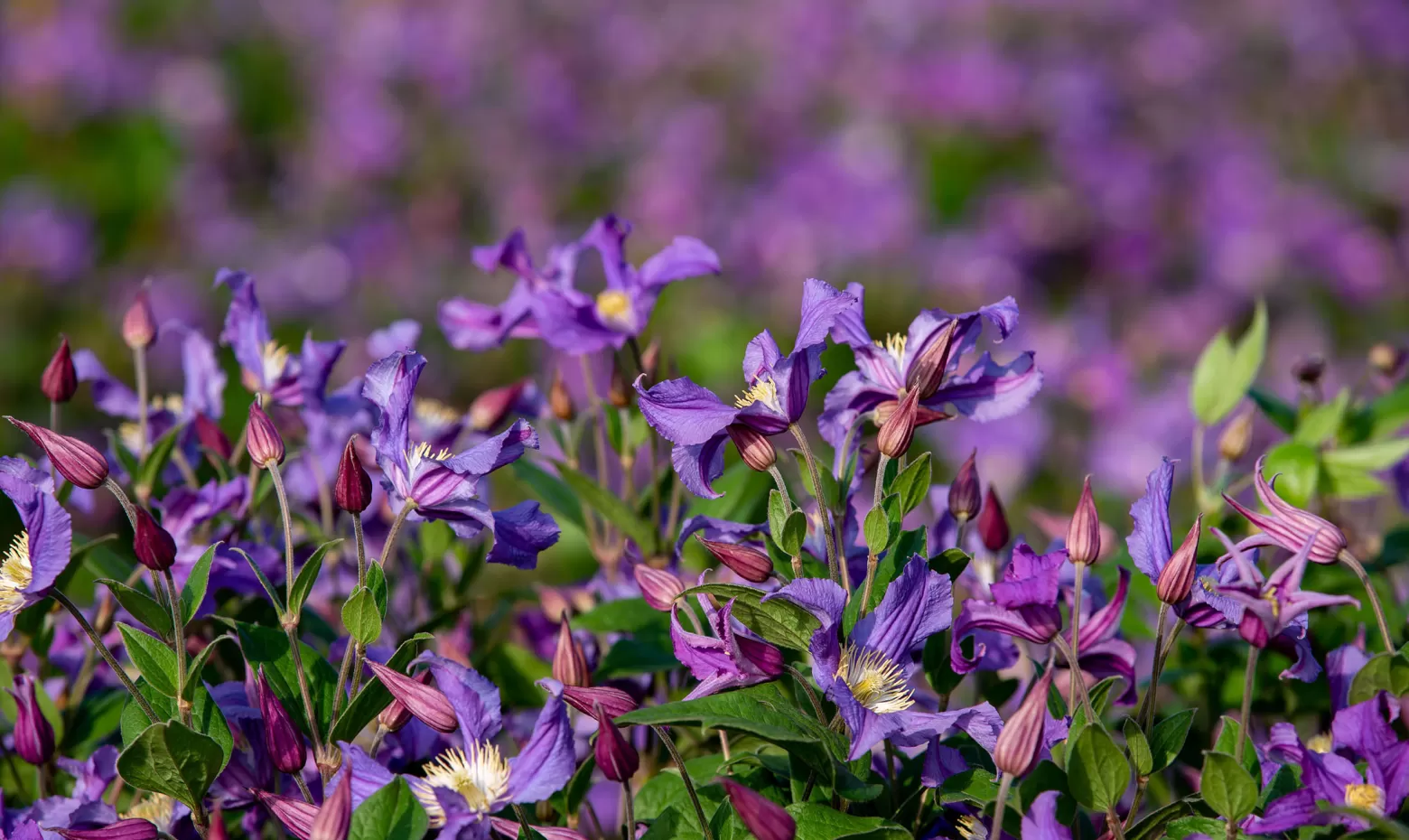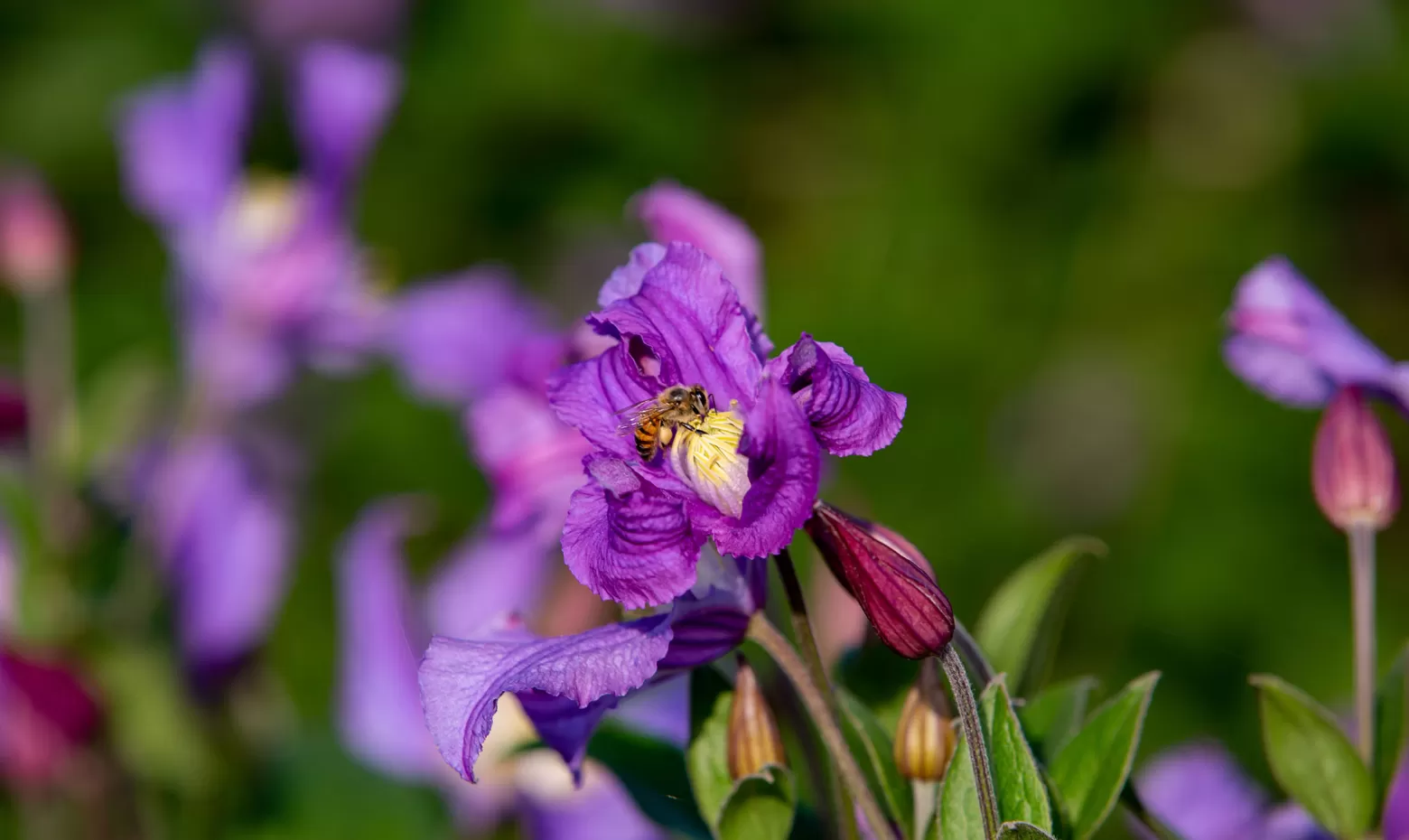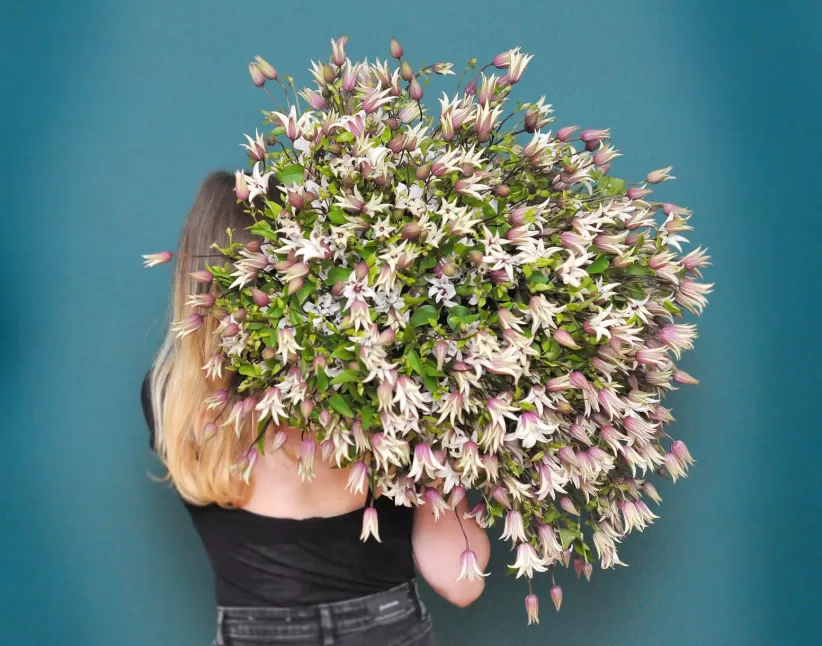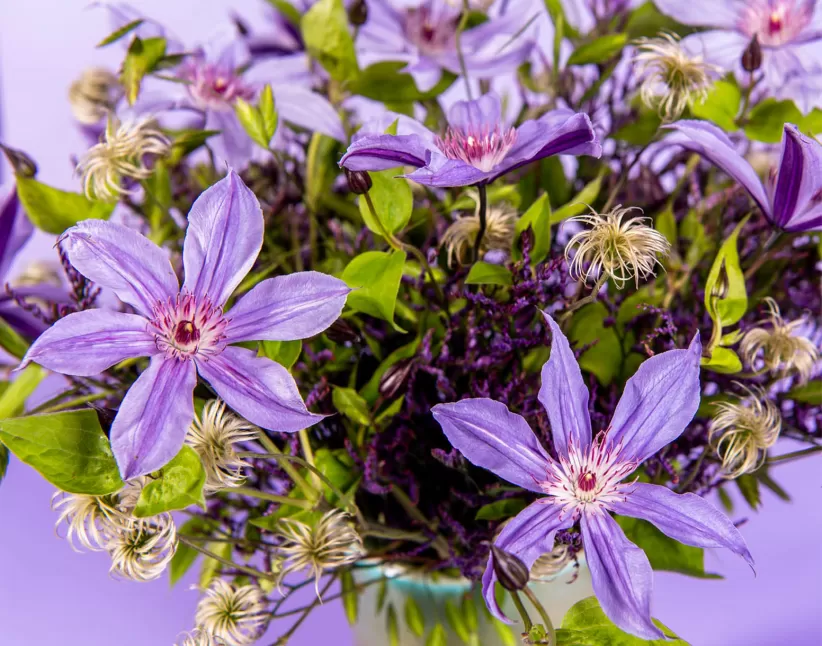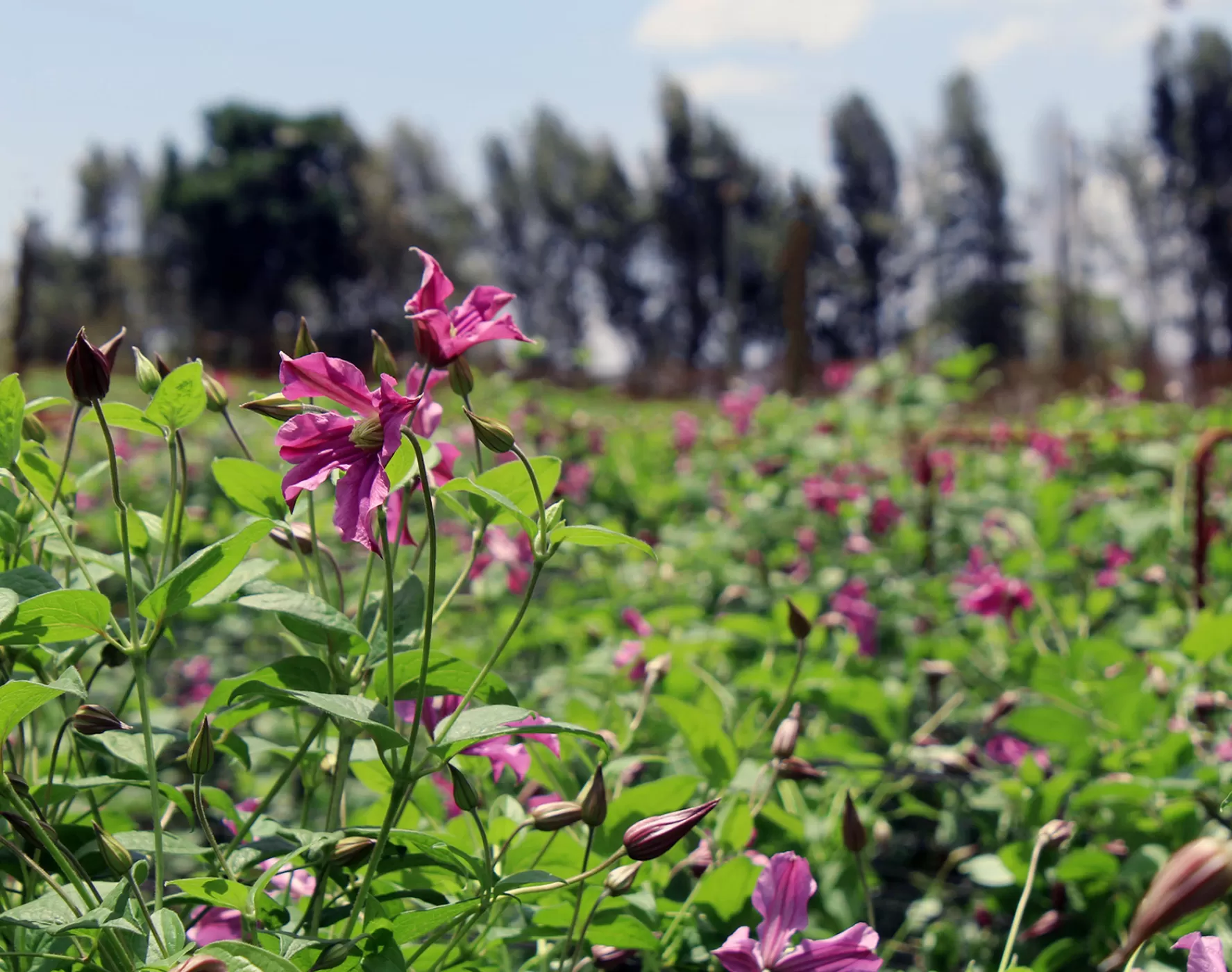
The art of breeding
Imagine that 99.9% of your work leads to nothing. Would you continue with it? But what if the 0.1% that remains is so unique that you do not want to stop?
This is the story of one of our breeders.
e go back a century in time. Somewhere a Clematis is used as a cut flower. WW II breaks out and the cut flower disappears. A Dutch breeder goes looking for this ‘cut’ Clematis in the 90’s and ends up in Japan. He sees opportunities to refine the Clematis from garden plant to cut flower.
A deep dive
Jan van Zoest, owner of Clematis nursery J. van Zoest B.V., wants to continue developing this flower. But this cut flower is not easily placed in a vase. The process from breeding to introduction can thus take a decade. Jan is looking for a partner, someone who is just as fond of innovative species as he is. After having heard ‘not interested’ several times, he arrives at Marginpar. And he immediately receives a resounding yes. The adventure begins...
"Breeding a Clematis does not work like Mendel's laws," he admits, laughing. The fertilisation of the clematis is carefully done by hand, with pollen stamen and pistils.
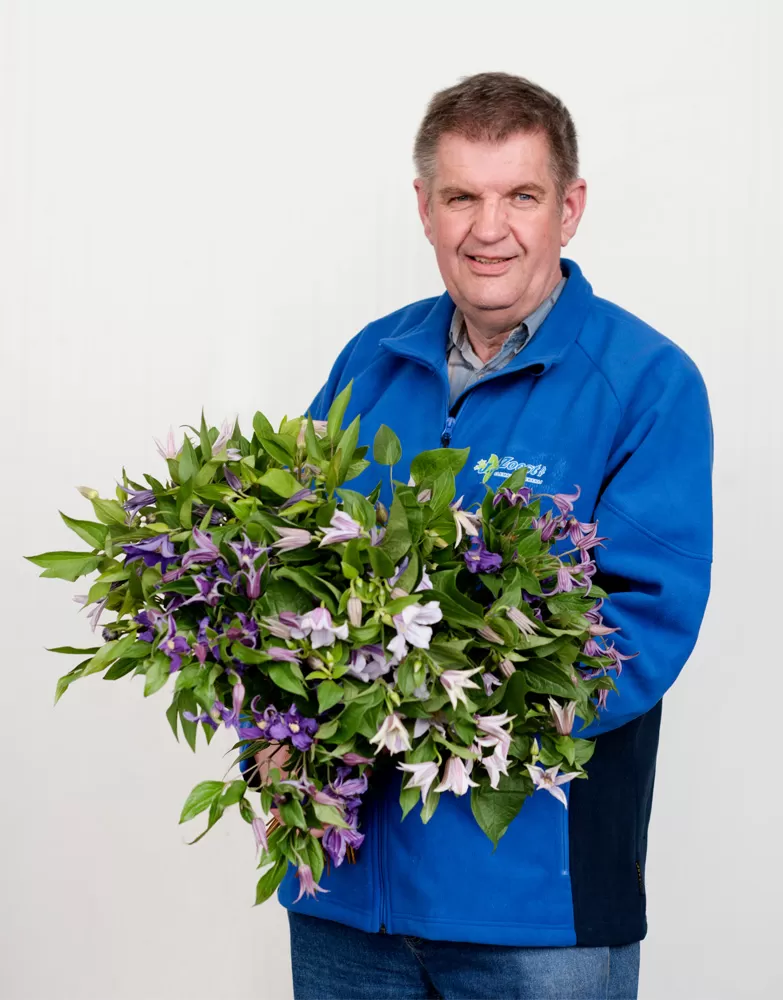
”Marginpar has stuck his neck out. This is not a ready-made product. None of us knew whether this would work.
With a clear goal: a specific characteristic, better, stronger, and above all something that is not yet available in the market. The "parents" are carefully selected, and after fertilising the waiting starts. The seeds are sown, grown, weaned. After two or three years it is visible whether the plant has the right characteristics and the first selection follows. Only the best continue. The X factor of the flora. The selection is increased by cuttings.
Off to Africa
After two years of cuttings, a part can go to the Marginpar farm in Tanzania. It is tested whether they also grow well there, whether they are resistant to fungi, how easily they multiply, the vase life, and so on. His son Jos van Zoest travels there regularly to investigate and guide the new species; and pull out the plug where necessary. Even if there is already a field full of them, because yes: “We only go for the best. It just has to be really good. ”If a winner has emerged, multiplication starts, so that with the introduction of the Clematis there is sufficient supply to meet the demand all year round. In 2006 it happened. The Clematis Amazing® Blue Pirouette is the first Clematis cut flower to be introduced and embraced. It then takes five years for a successor to come, but after that it goes fast. New cultivars are added to the assortment almost every year.
You have to accept social media cookies to view this video.
To change your cookie preference, go to the cookie page.
“It’s amazing to conquer the world with something new and different” thus said by Peter van Rijssen, ‘Plant Hunter’ at Plantipp. In this video, Peter van Rijssen and breeder Jos van Zoest talk about the enormous difficulties ánd possibilities of breeding your own varieties: the Clematis Amazing® series.
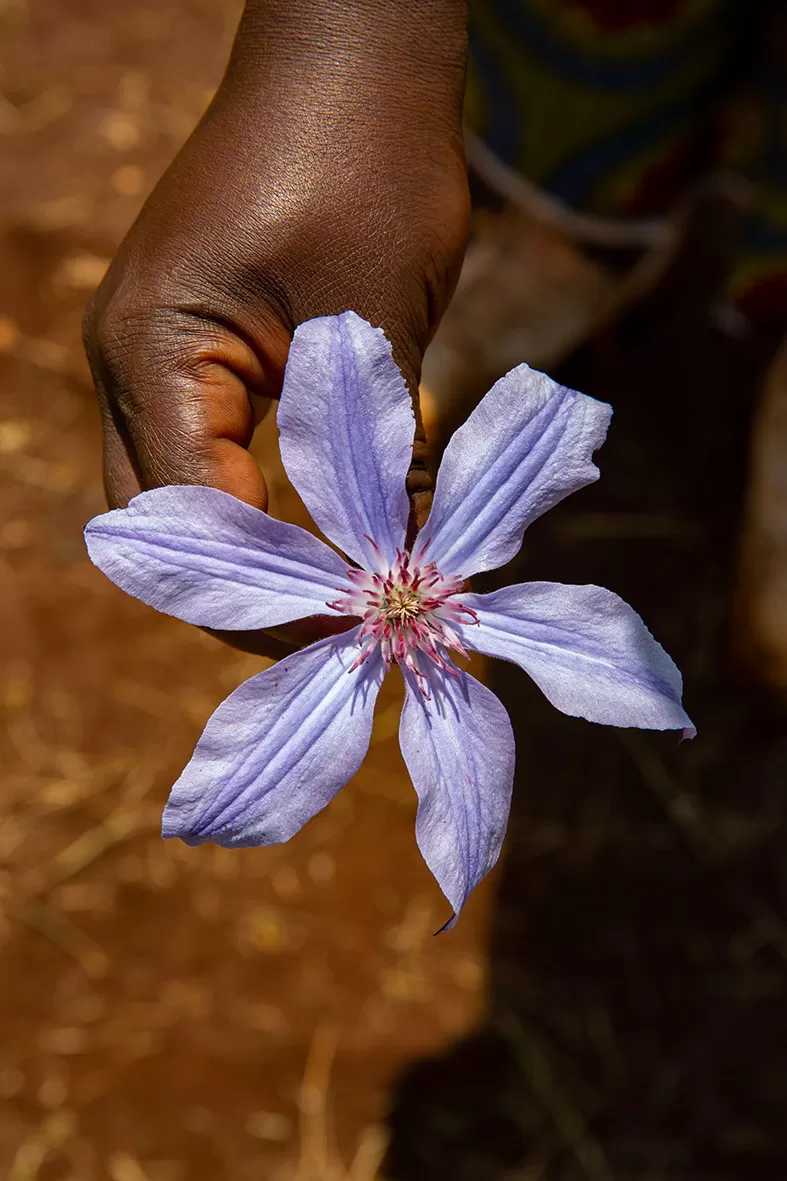
The Clematis Amazing® Series
In 2006, Marginpar introduced the Clematis Amazing® Blue Pirouette as the first clematis cut flower at Royal FloraHolland. Clematis Amazing® Kyiv followed in 2011 and Clematis Amazing® Star River was added in 2012. Star River won the prestigious Glass Tulip Award for best innovation in the cut flower category. In the spring of 2015, Clematis Amazing® London was introduced and in the course of the same year Clematis Amazing® Geneva, Clematis Amazing® Rome and Clematis Amazing® Oslo also entered the stage. Clematis Amazing® Miami was introduced in 2017. Clematis Amazing® Tokyo and Clematis Amazing® Kibo followed in 2018. Early 2020 a new addition is added: Clematis Amazing® Havana, followed by a long-awaited white variety end of 2020: Clematis Amazing® Vienna. Beginning of 2022 the first bicoloured variety entered the stage: Clematis Amazing® Sevilla.

